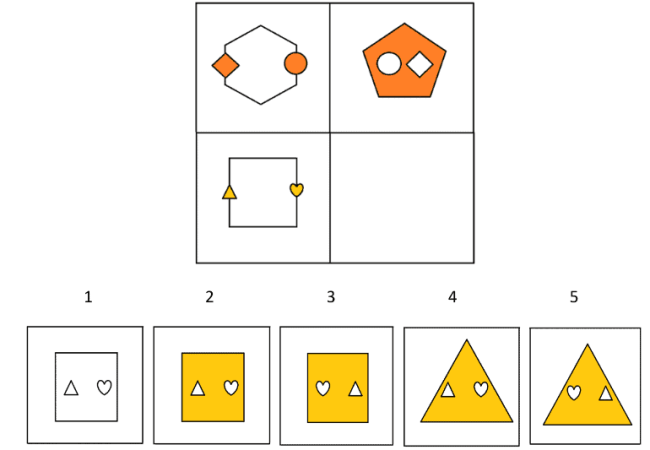The CogAT Screening Form is a short, 30-minute test designed to evaluate your child’s reasoning skills and determine eligibility for gifted programs.
Understanding this test and preparing effectively can help your child feel confident and perform their best.
This guide explains the key benefits of the CogAT Screening Form, includes free practice resources, and shares practical tips to support your child’s preparation.
Let’s explore how you can set your child up for success!

Hey there! Do you have a question about the test or our practice package? Email me at roman@staggingapps.website. I'm here to help your child succeed 🙂
The Screening Form is a condensed version of the Cognitive Abilities Test (CogAT), designed to assess a child’s verbal, quantitative, and non-verbal reasoning skills in just 30 minutes.
This test is widely used to identify students who may qualify for advanced academic programs by evaluating their problem-solving skills, critical thinking, and ability to recognize patterns.
For schools and parents seeking a quick, reliable evaluation, this option offers valuable insights without the need for the full-length assessment, making it both practical and efficient.
The Screening Test provides schools with an efficient method to evaluate large groups of students, allowing them to identify those with strong reasoning abilities in a short amount of time.
By focusing on core cognitive skills, the test streamlines the process of pinpointing students who may be well-suited for advanced academic programs or gifted education opportunities.
This test is especially advantageous for children who encounter challenges with language or reading. Unlike assessments that rely heavily on verbal comprehension, the Screening Test prioritizes problem-solving and pattern recognition.
This approach ensures that students’ cognitive strengths are accurately assessed, regardless of their language proficiency or reading ability, making it a more inclusive option for diverse student populations.
The Screening Test evaluates three main areas of reasoning: verbal, quantitative, and non-verbal. Each section highlights different aspects of a child’s cognitive skills.
These sections together provide a comprehensive view of a student’s problem-solving and logical thinking skills.
The Screening Test and the full version of the Cognitive Abilities Test differ in both duration and depth.
Screening Test: This shorter version includes one subtest from each category—verbal, quantitative, and non-verbal reasoning. It takes about 30 minutes, offering a quick overview of a child’s cognitive skills.
Full Test: The complete version includes multiple subtests within each category, providing a more detailed assessment. It typically takes 2-3 hours to complete.
For a quick evaluation, the shorter test is ideal. However, the full version is better suited for a comprehensive understanding of a child’s abilities.
Here’s a table that summarizes their key differences:
| Feature | CogAT Screener | Full CogAT Battery |
|---|---|---|
| Subtests Included | One from each area: Verbal, Quantitative, and Nonverbal | Multiple subtests within each area (Verbal, Quantitative, and Nonverbal) |
| Testing Time | Approximately 30 minutes | Approximately 2-3 hours |
| Purpose | Provides a quick, reliable initial data point for eligibility in special programs | Provides a detailed assessment of cognitive abilities across three areas |
| Content of Tests | Each battery’s analogies and matrices portions only | Comprehensive testing across all sections including analogies, classification, series, and more |
| Result Utilization | Initial screening for program eligibility | Detailed cognitive profile used for educational planning and tracking |
| Level Detail | Same high-quality standards as the full test, but less detailed | Detailed, level-specific content that is developmentally appropriate for the test-taker’s grade |
The process for interpreting scores is the same for both the Screening Test and the full version.
Key elements include raw scores, Universal Scale Scores (USS), and percentile ranks, as well as comparisons based on age and grade norms.
For a detailed explanation of how to interpret CogAT scores, you can refer to our full article here.
The Screening Form of the Cognitive Abilities Test assesses different reasoning skills through various question types. Here’s what your child will encounter:
These questions challenge your child to identify relationships between words or pictures, testing their ability to recognize patterns and connections.
SAMPLE QUESTION
scurry→ mouse : slither→ ?
A. rat
B. snake
C. lizard
D. bird
E. worm
The correct answer is snake.
This analogy demonstrates a characteristic movement associated with an animal. Scurry describes the quick movement of a mouse, while slither describes the movement of a snake.
This section evaluates quantitative reasoning by focusing on numerical relationships and patterns.
SAMPLE QUESTION
[48 → 28] [88 → 48] [36 → ?]
A. 12
B. 14
C. 18
D. 22
E. 26
Correct Answer: 22
The number on the right side is obtained by dividing the number on the left side by 2 and then adding 4 to the answer. The numbers are obtained; 48/2 + 4 = 28, 88/2 + 4 = 48, and 36/2 + 4 = 22.
Your child will analyze a grid of shapes or figures with one missing piece, selecting the option that completes the visual pattern. This tests non-verbal reasoning and spatial awareness.
SAMPLE QUESTION

The correct answer is 5.
The first row shows the following relationship between the figures:
Two small shapes are placed on the lateral sides of a larger shape. Then, the small shapes move inside the larger shape and swap positions. They also give their color to the larger shape and remain blank. Last, the number of sides of the larger shapes decreases by 1 when moving from left to right.
The only figure that fits this description for the second row is the 5th one.
Helping your child prepare involves familiarizing them with the test structure and practicing key skills. Here are some simple and effective strategies:
Consistent practice and preparation will help your child approach the test confidently and perform their best.
The test is usually given in schools, either on paper or digitally, depending on the school’s preference. It takes about 30 minutes and includes questions from three categories: verbal, quantitative, and non-verbal reasoning.
Students typically take the test in groups under timed conditions, but some schools may offer individual sessions.
In many cases, retakes are allowed, but this depends on the school’s policy. Some schools permit one attempt per year, while others allow retakes under specific circumstances, such as illness during the initial test.
Check with your school for details.
The timeline for results varies by district. Most schools provide results within a few weeks of the test date. The report usually includes your child’s percentile rank and a comparison to their peers. Contact your school for specific timelines.
The CogAT Screening Form offers a quick and effective way to assess your child’s reasoning skills in verbal, quantitative, and non-verbal areas.
Whether you’re exploring eligibility for gifted programs or seeking to understand your child’s cognitive strengths, this test provides valuable insights.
Preparation is key to boosting confidence and performance. Practice tests and familiarization with question types can help your child feel ready to excel.
This test is one of many opportunities to understand and support your child’s growth, helping them build confidence and reach their potential.
Take advantage of the resources available to ensure your child is fully prepared and confident on test day!

Sharpening your child's skills with lifelike practice for gifted tests and school exams.
© 2025 GiftedReady | HTML Sitemap